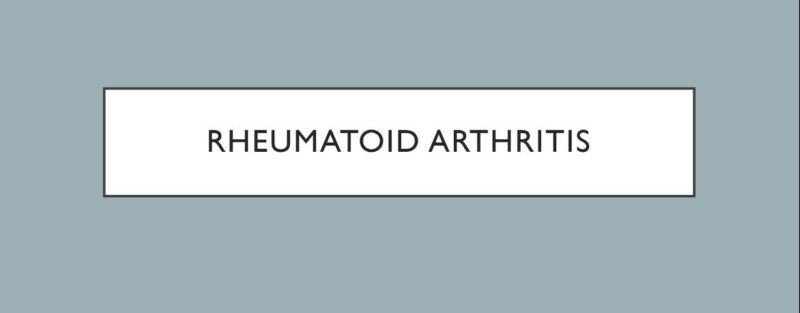Introduction-
Rheumatoid Arthritis is an autoimmune chronic disease which may become systemic disease. It is three times more common in in women, it’s onset is during 4-5th decades of life with 80% patients developing arthritis in 35-50 years.
The most common feature of rheumatoid arthritis is symmetrical peripheral joint involvement.
Pathogenesis-
Due to genetic / environmental factors the antigenecity of joint tissue becomes altered which initiates an autoimmune response against joint tissue , i.e T Lymphocytes recognises the altered joint tissue as an antigen and starts inflammation against it, then activation of B lymphocytes occurs which causes the formation of IgG against this antibody an IgM antibody is formed which is known as Rheumatoid Factor.
Rheumatoid Factor indicates the severity of disease, and it may lead to erosive arthritis due to which deformities occurs , this inflammation may spread to other organs and may involve blood vessels, serosa, lung parenchyma and other organs .
Due to erosive arthritis RBC, WBC , Platelets all may decrease and blood transfusion should be preferred.When rheumatoid Factor is negative then it is known as non erosive rheumatoid arthritis.
Onset of Rheumatoid Arthritis-
• Insidious onset– It takes months to develop RA, till months only pain , fatigue occurs , in this case patient complaints of pain in muscle (not in joints) and after months of pain and fatigue bilateral symmetrical polyarthritis occurs ( mostly hand joints are involved )
• Acute Onset- For weeks pain and fatigue occurs, after some weeks asymmetrical arthritis occurs.
• Stormy Onset- It comes suddenly ( within days) with lymphadenopathy and spleenomegaly
Clinical Features–
– Fever, fatigue, malaise, muscular pain, interference with daily activities.
– Pain, swelling, redness. Pain increases with movement
– Stiffness after period of inactivity and morning stiffness of >1 hr
– When disease is in remission there is little pain, stiffness for <15 minutes, no interference with daily activities.
On examination-
• Swelling , tenderness
• Joint is held in flexion because in this position there is minimum stretching of capusle.But in chronic stage there is ankylosis of joint along with contracture of soft tissue.
• There is limitation of joint movement
Treatment-
The treatment of RA is palliative, not curative, the aim of the treatment is pain relief, protection of articular structure, and maintenance of its function.
– Rest and splintage:- Affected joint is given rest by splintage, which decreases pain, inflammation and deformity.
– Range of motion exercises are advised to maintain muscle strength and joint movement without increasing joint inflammation.
– Heat Therapy:- In the form of heat formulation warm compresses are given, some patients respond to cold therapy.
Drugs :-
• NSAIDS – like Indomethacin, Naproxen, Diclofenac, Aceclofenac, Etoricoxib. These are given to decrease pain
• DMARD – Disease modifying anti rheumatoid drugs have minimal direct anti inflammatory effect and so NSAIDs should be used along with them.They decrease NSAID requirement and retard bony erosion. There beneficial effects become apparent after weeks-months
They are used when there is evidence of invasive disease.They should be used within 3-12 month of diagnosis of disease for best results.
More than one DMARD may be used in advance disease. All DMARDs loose effectiveness with time.
Among various drugs used as DMARD, Methotrexate is DMARD of choice because it causes symptomatic relief within 4-6 weeks





1 Comment
Aniket chaudhary
Nice